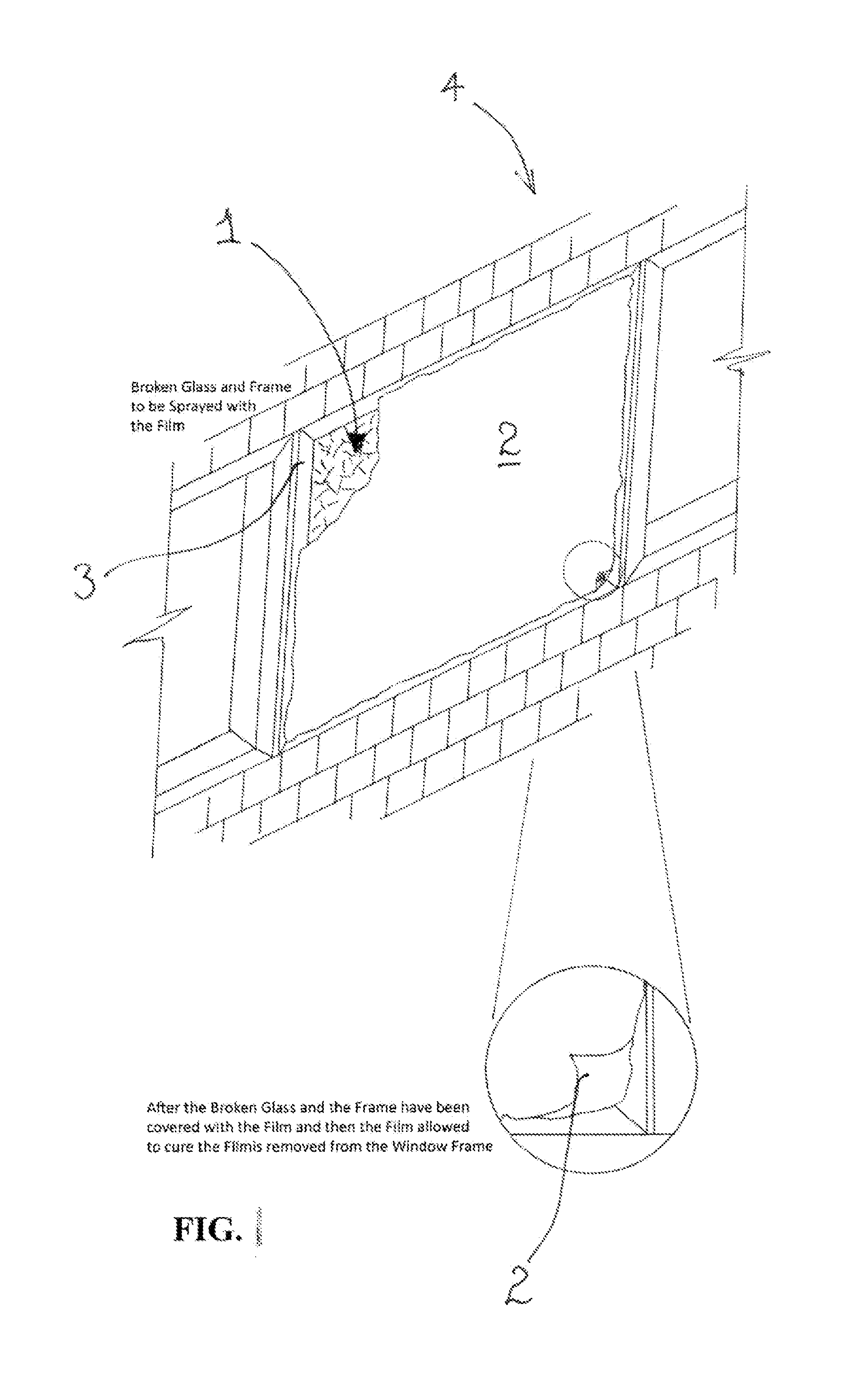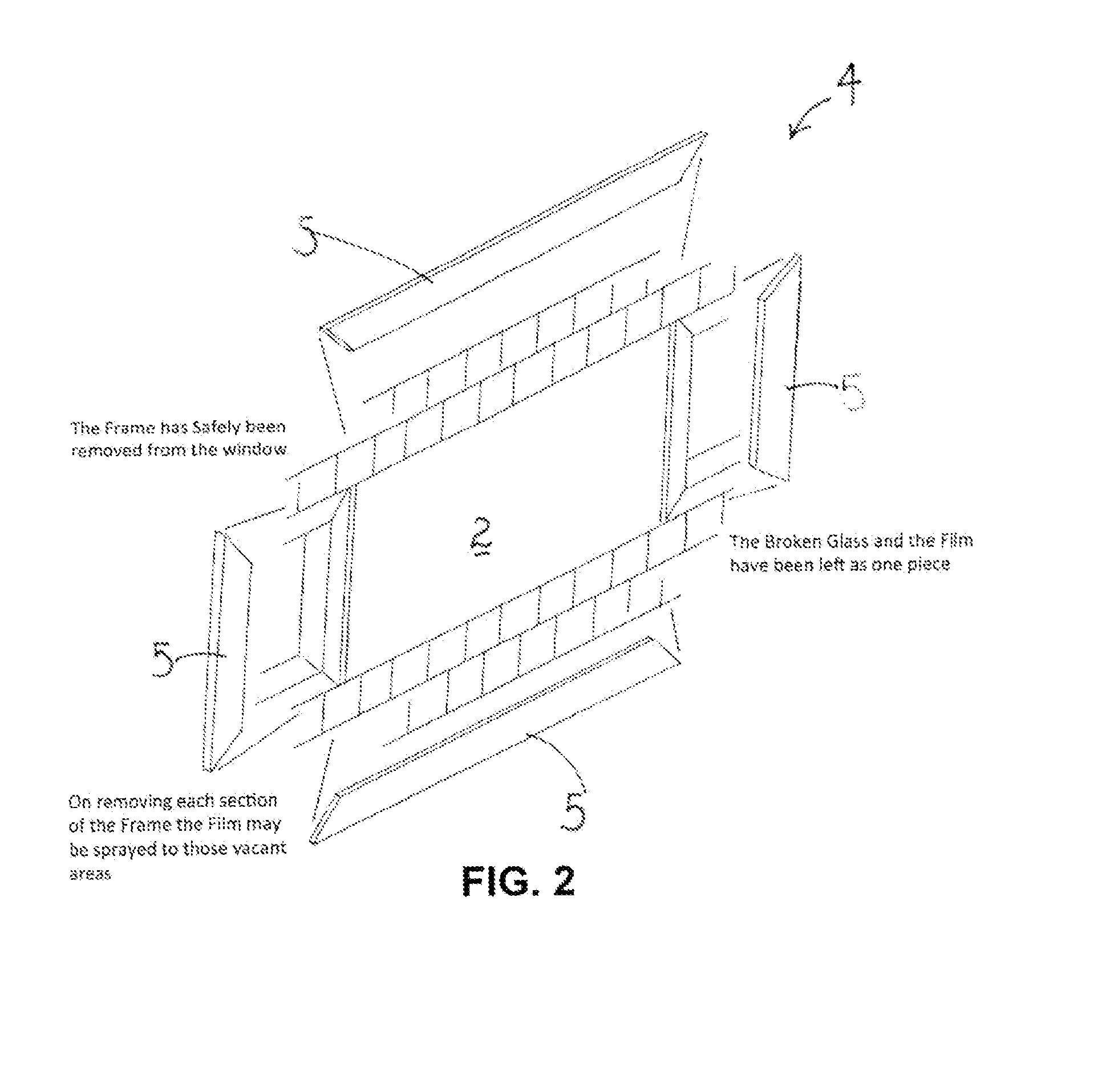Sprayable composition for stabilising broken glass and method of applying same
- Summary
- Abstract
- Description
- Claims
- Application Information
AI Technical Summary
Benefits of technology
Problems solved by technology
Method used
Image
Examples
Embodiment Construction
[0046]The term “glass” as used herein is intended to include various types of glass including treated glass, untreated glass, tempered glass, laminated glass, single pane glass, double pane glass, etc. and is not limited to any particular types of glass.
[0047]The sprayable glass composition of preferred embodiment are preferably sprayed on to glass to stabilize a window, door, curtain, or partition structures formed from or including glass or glass panes (for example including a glass door or framed glass door) installed in fabrications or constructions, such as office buildings and residential homes and apartments. It may be applied to window, door, curtain, partition structures of any type including one or more glass panes disposed in an opening circumscribed by a window, door, curtain, and partition frame. The opening and frame may form or be disposed in exterior or interior walls or doors of the fabrication or construction or may be free-standing, such as where the fabrications ...
PUM
| Property | Measurement | Unit |
|---|---|---|
| Force | aaaaa | aaaaa |
| Pressure | aaaaa | aaaaa |
| Rheological properties | aaaaa | aaaaa |
Abstract
Description
Claims
Application Information
 Login to View More
Login to View More - R&D
- Intellectual Property
- Life Sciences
- Materials
- Tech Scout
- Unparalleled Data Quality
- Higher Quality Content
- 60% Fewer Hallucinations
Browse by: Latest US Patents, China's latest patents, Technical Efficacy Thesaurus, Application Domain, Technology Topic, Popular Technical Reports.
© 2025 PatSnap. All rights reserved.Legal|Privacy policy|Modern Slavery Act Transparency Statement|Sitemap|About US| Contact US: help@patsnap.com



